
Iceland is a destination often on people's wishlist, for northern lights, winter sun, midnight sun, whales, volcanoes, rivers and isolation, but seldom for climbing. The unique Icelandic landscape can provide a surreal and majestic backdrop to any climbing trip here and is worth the time to check out. From sea-side ice climbing in the west fjorðs, ending the day in a hot pot whilst the northern lights play overhead, to sunny sport climbing on a thousand year-old sea cliff below one of the largest active volcanoes in Europe, there is a little bit for everyone.
Typically the Icelanders use the Yosemite Decimal System for grading trad and sport and V grades for bouldering but this changes from place to place depending on who started putting the routes up. The grading can be fairly inconsistent, expect 5.8s of 6b+ or above and 5.11s of 7b/c, and feet-by-hands sit starts to even the easiest of boulder problems can cause the strongest to flounder.
I'll outline some of the key destinations in Iceland for all types of climbing, beginning with anything rocky. The most popular climbing in Iceland is bouldering and sport climbing, large boulders litter the landscape and the basalt cliffs don't often offer the best traditional protection, but the small population and limited number of climbers means that many areas have not been fully explored.
For a map showing climbing locations in Iceland, click here.
Bouldering
Bouldering in Iceland is the easiest form of climbing to find, route guides for some places exist either online or in the local bouldering wall, Klifurhúsið. This section runs through areas close to Reykjavík and moves further out, though there are undoubtedly more areas out there that are still to be discovered.
Josepsdalur: A secluded spot close to Reykjavík, requires a 4x4 or a long walk from where a small car will reach. A large, lonely boulder sits at the bottom of Josepsdalur (Joseph's dale/valley) and has been climbed for many years with some fun routes of all grades and perfect landings right next to the car. In 2007, Valdimar Björnsson decided to take a walk up to some of the small rocks sitting higher on the hill, only to find they were in fact giant boulders perched upon the steep sandy hillside (Jafet B. Josepsdalur Leiðarvísir). Since then many of the boulders have been climbed and many fantastic routes put up, the steep slope requires an avid spotter but the seclusion of an area just 30 minutes from town makes it a worthwhile venture.
Reykjanes: There are many bouldering areas on the Reykjanes peninsula, all covered in a guide book available in the climbing gym of Reykjavík. The peninsula often escapes bad weather when the rest of the land is raining, but the strip of land is bare of trees and thus any Atlantic wind will hit with full force.
Oskjuhlio: Right in the centre of Reykjavík is a small and friendly little climbing spot which often avoids any wind.
Gálgaklettar: Close to Keflavík Airport, good rock with wind blown rock features and routes of most grades up to 7c. Some bad landings but will escape northerly winds.
Valbjargargjá: Near the picturesque Reykjanesviti (Reykjanes lighthouse), and hot springs this cliff offers some highball, hard for the grade routes on sharp rock. A fun place for a few hours, beware the arctic terns!
Hörzl Við Hauga: Try saying that name properly...A very fun place, a series of cliffs formed by large grabens (faults) as Iceland splits itself apart. Still lots of potential and lots to explore, landings are generally sandy and good while the rock is sharp but good quality.
Leirvogsgíl: Just outside of Reykjavík is a small but beautiful bouldering and sport climbing location. The bolted routes are short (3 clips) but powerful – Iceland's first 5.12, Leiðinn undir Esju, was put up here. Bouldering here is either on the cliff band with mostly terrible landings, except where local climber Ben Mokry has made some nicer landings. Small boulders on the valley floor suddenly become much larger when stood next to them, even so, problems typically have only 3 or 4 moves, if anyone can get a JCB down there to shift some rocks we'll have lots more to go at!
Akrafjall: A section of crags by Akranes, beneath the picturesque Akrafjall, short walk from the car, perfect landings and amazing views over the coast. Bouldering and some short bolted routes, a new guide by Doddi, Klifurfelag Akranesi (Akranes climbing club) presents many of the routes in a free pdf (albeit in Icelandic). Recommended routes include Besta Leiðin and a newly bolted 6c+ Ljótur Álfur. New bolted routes keep popping up and may soon become more of a sport climbing spot than a bouldering one.
Vestrahorn: See separate section for this location.
Hnappavellir Bouldering and sport climbing (see next section).
More?
If you have a pad, shoes and a car then go find some rocks. So many unexplored areas litter the country but the limited number of climbers and the limited climbing season keep the areas confined to the known good ones. I've explored some flood-polished boulders along Möðrudalsleið in the north of Iceland and there are reports of a good boulder field near Neskaupstaður in the east fjörðs.
Rope Climbing Areas
Reykjavik Area
Búahamrar: An underutilised spot close to Reykjavík, the cliff band lies beneath Esjan, a majestic mountain overlooking the Capital area. The rock is dolerite, a large 2 My old intrusive body from nearby Kjalarnes volcano, that is now exposed thanks to the unenviable work of millions of tonnes of ice carving the landscape. The rock is unstable in many places but most of the routes have been cleaned, still, a helmet is a must on most routes. It takes around 20 to 30 minutes to drive to the car park and another 20 to 40 minutes to the base of the routes. The infamous Mossfells Bakarí of Mossfellsbær is also en route, a quick pop by for a coffee and Love Balls (Ástarpunga) is a must pre or post climbing.
Classic routes include the 5.8 (6a+) Svarti Turninn (The Black Tower), Rauði Turninn 5.9 (6b+), Gárun Gárun 5.11d (7a(+?)), Vítisbjöllurinn 5.12 (7b). All routes on the main cliff are well bolted but finding some of the routes may require local knowledge as topos are hard to find. An alpine style route follows one of the larger ridges of the cliffs west of Búahamrar, the area is also very popular for dry tooling and ice routes in the winter. The best of these may be "55º North" WI 4/5.
Stardalur Trad climbing just 30 minutes from Reykjavik. Coarse dolerite from Stardalur central volcano (4 My) overlooking Mosskarðsheiði and, on a good day, all the way down to the city. The crag faces south east so climbing is best done during the middle of the day in late spring, summer or early autumn. The routes vary from 10 - 15 metres up to 50 m on those that weave around the cliff. Much of the rock is good quality but some large, loose blocks are around. Grades range between 5.0 and 5.11, mostly around the 5.6 - .8 mark and there is undoubtedly room for more routes.
An Icelandic route guide is available here.
Valshamar: A popular sport climbing crag on the northern side of Esjan, grades ranging from 5.4-5.11 (4 - 7a+). Gets the sun in the afternoon to evening and during mid-summer it's easy to lose track of time and continue in sunshine until midnight.
West
Gerðuberg: With perfect columnar joints up to 15 metres high, Gerðuberg is a popular tourist spot on the south side of the beautiful Snæfellsnes. Located just off route 54, close to Eldborg (fire city), a picturesque eruption crater, it can be reached from Reykjavík in an hour and a half (perhaps a little longer to pause in the lovely Borgarfjörður bakery…). A detailed route guide can be found online here.
Once you've tasted the delights of Gerðuberg climbing, why not finish the day off with a toasty hot pot close by? If that's not tempting and the psyche is too high the coastline towards Borgarfjörður is also littered with potential bouldering spots if that takes your fancy.
West Fjörðs
Norðurfjörður: A new destination, as large as Hnappavellir but still to be cleaned and developed. There are new routes and this area will give you almost complete isolation. http://urdartindur.is/ offers accommodation, camping or cottage and a map location.
North
North Fjörðs:
Munkaþverá: Sport climbing 20 km south of Akureyri. Climbed on since around 1990 and has around 25 routes. Topo here.
Skinnhufuklettar: Sport climbing in the north fjords. Around 14 routes. Topo here.
East
East Fjörðs – Vestrahorn: A beautiful and iconic mountain, a gabbroic pluton from the 4-6 million year old Vestrahorn-Eystrahorn volcanic systems, well photographed but seldom reached. A classic 5.6 bolted route makes its way up the main peak to a summit of stunning views. The climbing is straightforward but finding the route may provide the crux. A sparsely bolted 5.10 'Saurgat Satans' climbs a grassy slab to finish somewhere on the cliff and abseil back down.
Further to this, Vestrahorn offers some of Iceland's best bouldering. Large gabbro boulders litter the hillside, sandwiched between majestic cliffs and crashing waves. The boulders are reached by driving past the cafe and towards the mud flats, usually the cafe can give more information about crossing the mud flats. The first area is a large, steep rock stood away from the others offering numerous routes. The main boulder area is a short walk from the car, where most of the larger boulders have routes but its gems still lie waiting to be discovered. To my knowledge, no guide has been written on the area but if you find the place, just go and explore.
I've had a good wander around the east fjörðs in search of good rock to climb on, it's sparse, but possible. Between Vestrahorn and Eystrahorn, the Lón area, is a fair selection of boulderable areas as well as other climbing sectors – the rock is compact and offers little natural protection though.
South
Hnappavellir: THE climbing place of Iceland. 100's of routes and plenty of scope for more. Hnappo sits above the flat flood plains of Öræfasveit, beneath the majestic volcano of Öræfajökull, famous for its 1362 eruption, reportedly one of the largest explosive eruptions in historical Europe. The area was devastated by pyroclastic density currents and ash fall which left it a wasteland (Öræfi) and killed all the nearby inhabitants. The only reported survivor was a single Icelandic horse. Close-by to the climbing area is the Skaftafell national park, a beautiful and popular tourist area – go check out Svartagíl (Black Ghyll) and look down onto Svinafellsjökull or Skatafellsjökull. Glacial ice climbing and walking is possible, ice caves, moulains and cravesses abound, as well as longer mountain days from the area.
Hnappo itself is a long series of basaltic cliffs, from a single lava flow, with sections up to 30 metres high. Routes of all grades have interesting characters on solid, wave washed rock (the sea is now many kms away). There is a campsite beneath the cliffs, which is permitted by the land owners, but tents must stay in the demarked area and no sleeping in the hut. A guidebook is available to buy online or in Klifurhusið.
Recommended routes: Páskaliliur, 5.6 (5+); Besta leiðinni í landsins, 5.8 (6b+); Mona Lísa, 5.8 (6b+);
Hnappo also has abundant bouldering routes of all grades, these are covered in a separate guide available, again, at Klifurhusið.
Ice Climbing in Iceland
Ice climbing in Iceland should have its own dedicated guide so I'll just breeze over some classic areas here. Iceland, as the name suggests, can get a bit icy. Unfortunately its location, as a rock in the middle of the North Atlantic, can give somewhat unpredictable weather. That said, prime climbing months are December through to March, with February offering accessible low lying ice falls and longer daylight hours. March loses low lying ice but long days and long routes await those who seek them. In fact, ice climbing doesn't have to be limited to just those months, abundant glaciers with huge moulans and ice caves mean that one can ice climb the whole year round.
For updates on how the ice is doing check www.isalp.is.
Top destinations:
Hvalfjörður: 40 minutes from Reykjavik, southerly aspect valleys and ice falls of any length and difficulty spread over the whole fjörð. Brynudalur offers nice beginner and top roping options as well as longer ice falls and tough dry tooling. Múlafell is one of the most popular ice climbing spots with a spread of grades and bolted dry tooling routes when the ice isn't quite there yet.

Kirkubærklaustur: Abundant roadside ice falls, can be tricky to avoid rain!
Kaldakinn: A popular climbing area in the north of Iceland, the north and west fjords offer some of the most settled weather and best quality ice (and snow).
Many more areas are scattered around Iceland, often looking at a weather forecast and aiming for the best weather is almost guaranteed to bring good ice and happy climbers.
Mountains and Alpine
There are almost too many mountains to mention that are worth a visit. The tallest mountain is Hvannadalshnjúkur, a peak on the rim of the enormous Öræfajökull volcano. There are easy walking routes and many alpine routes in this area. It may be worth contacting the rangers, guides or isalp members to find out more.
How do I say stuff in Icelandic?
90% speak English
Á á = oww
Ö ö = uhh
Þ þ = Th
Ð ð = 'th' in 'neither'
Ll = 'tl' pushed over the tongue, close to Welsh 'll'
J = y
Æ æ = i
Now try "Eyjafjallajökull".
Logistics
When to Go
Ice: Jan-March
Alpine: March-May
Rock:May-September
Bouldering: May-November (or whenever the snow clears/comes)
Mountains: Spring
The winter is harsh and the days are short, but if you manage to come in settled weather or can be flexible with where you go then it's a playground. Summer is much like Scottish summer – unreliable. May to July are the most stable months weather-wise, just remember it's a small rock in the middle of the North Atlantic.
How to Get There
Easyjet and WOWair offer budget flights, for those looking for more comfort and a t.v. screen during flight then IcelandAir is your choice. A boat also leaves from Denmark via Þorshavn in the Faroe Islands
Accommodation Advertise here
No Premier Listings found in this area
Camping, AirBnB, Hotels, summer houses. Iceland is fully catered for tourists but during peak months in Summer and Winter inside accommodation can be tricky to find. Wild camping is allowed as long as there is no specified camping ground, there are signs telling you not to or if you´re going to leave scars or litter. Be aware that Iceland is on the edge of the arctic, plant life is fragile.
Food and Supplies
Icelanders love their food but as a small nation with expensive imports, the variety is limited. That said, you can go in for classic Icelandic meals like Kjötsúpa (meat soup), Lambalæri (lamb leg), anything with fish (try arctic char!). Then you can go for the "classic" dishes: fermented shark or herring followed by brenivín; sheep's head; ram's testicles and other delicacies.
For normal shopping Bónus and Krónan are the major supermarkets, with Bónus offering the cheaper end. Hagkaup and Netto are often open later but are more expensive. Icelanders take their bank holidays seriously so check opening times, especially if you go away from big towns (and there are only 4 of them). The highlands do not offer food, be prepared.
Guidebooks
No definitive Iceland guide exists, the web offers a lot but much of it is Icelandic. www.isalp.is/en/leidavisar or www.isalp.is/en or www.klifur.is provide a lot of guide books. Otherwise check out Klifurhúsið (climbing wall in Reykjavík) and their guides available in the store.
Gear
Climbing gear can be found in many places in Reykjavík but expect to pay well over UK prices. Reykjavik and Akureyri will be the only places to buy climbing gear but any other camping or hiking gear may be found in many large towns.
Outdoor Shops Advertise here
No Premier Listings found in this area
Instructor/Guides Advertise here
No Premier Listings found in this area
Other Activities
Whatever you want! Volcanoes, glaciers, horses, northern lights, midnight sun, mountains, fjords and isolated highlands. Endless amounts of hiking and culture or natural beauty. To properly explore Iceland a 4x4 is needed but a lot can still be done with a 'normal' car.
Whale watching tours (watch them, don't eat them) go from most large coastal towns. Northern lights tours are possible but anyone with their own car can get out anyway.

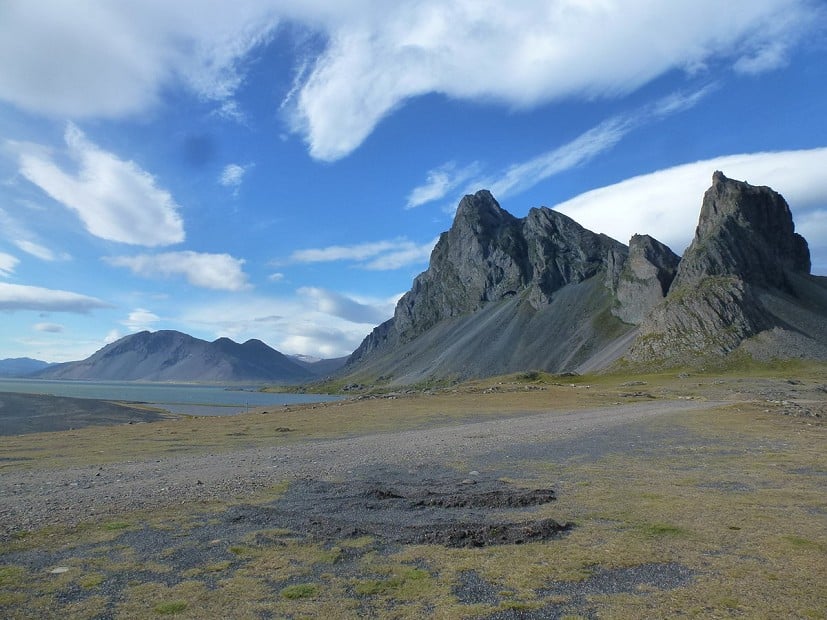
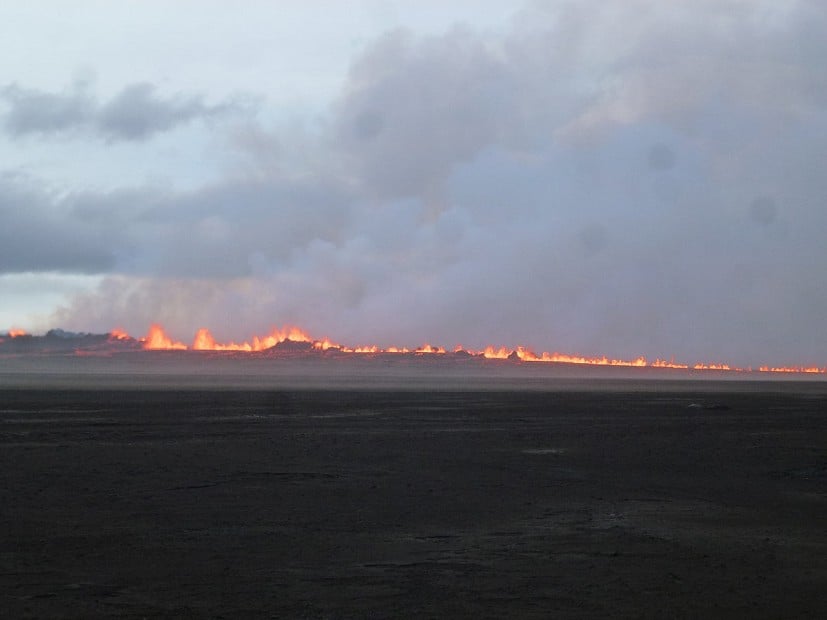

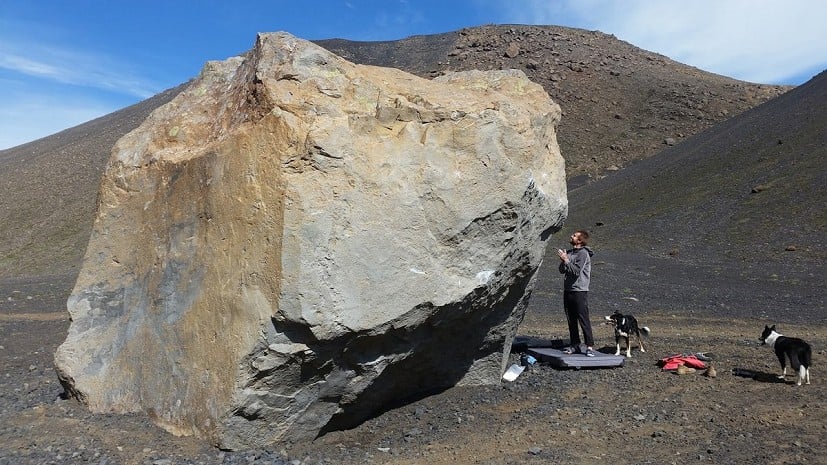
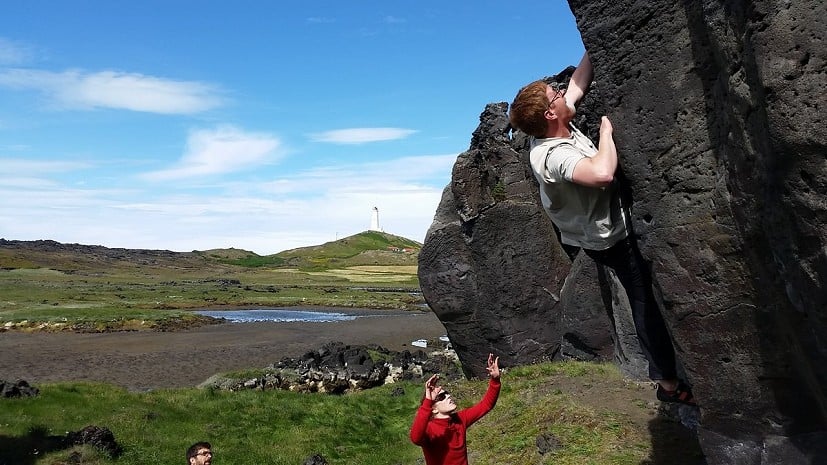
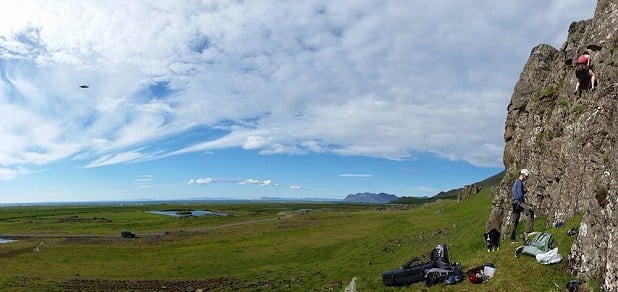
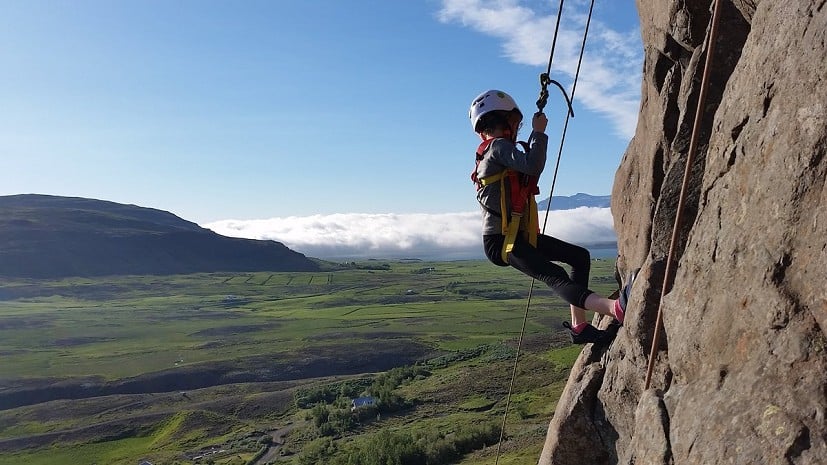
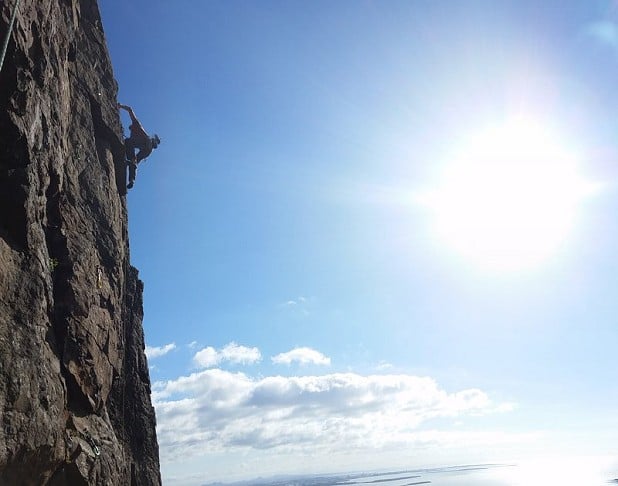
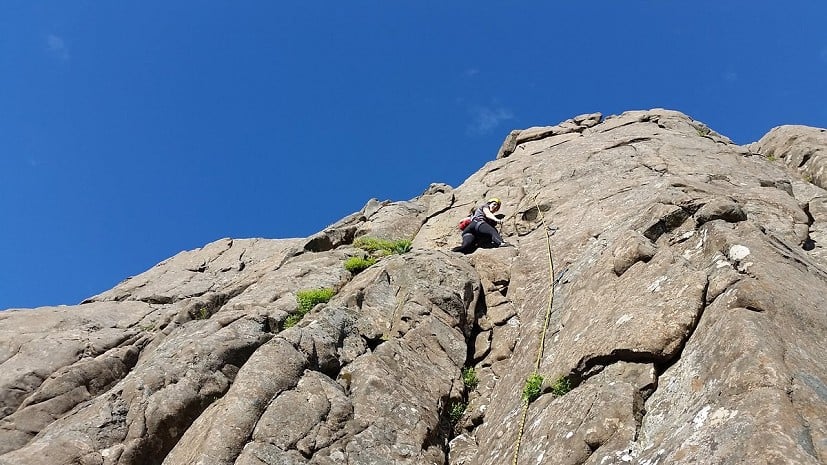


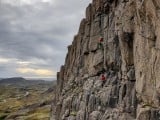
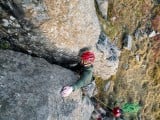







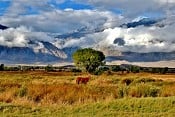

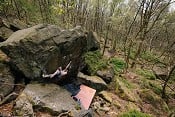
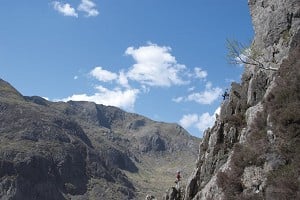




Comments